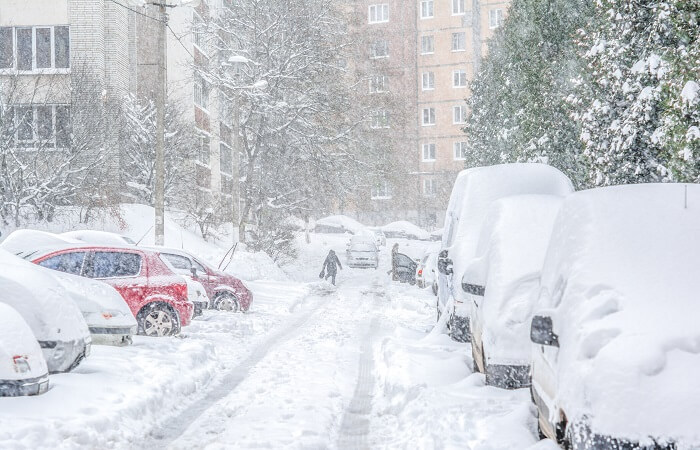The Teen Driver’s Guide to Winter Safety
Talk with your teen about the dangers of winter driving.
Talk with your teen about the dangers of winter driving.

Winter road conditions can pose issues for even the best drivers, and teens are particularly at risk. The biggest disadvantage teens have when it comes to road safety is their inexperience; they simply don’t know what to expect from the road, their vehicle or other drivers. But by preparing for winter road risks, teen drivers can improve their odds of avoiding a crash and injury.
This is where you can help. Talk with your teen about the dangers of winter driving so they know what to expect and can make safe decisions. Here are some tips to get the conversation started.
Be Prepared
One of the most important steps in preparing for winter driving is putting together an emergency kit for the car. This should include a snow shovel, an extra cell phone charger and many more supplies. Get more tips here and make sure your teen has everything they need.
But it’s not just about having the supplies, it’s also crucial for your teen to keep the vehicle in shape to drive safely. We’ve talked before about the importance of clearing the vehicle of ice and snow before each drive, but there are many other steps your teen should take. From regularly checking tire pressure, keeping the gas tank at least half-full and using the proper windshield-wiper fluid for the season, winter driving is unlike any other driving time of the year. Share these tips and use your own experiences to make sure your teen is ready to stay safe.
Plan Ahead
Before driving in the winter, it is always best to have a plan. Whether it’s across town or a longer trip to a relative’s house, help your teen get in the habit of creating and sticking to a safe driving plan. This should include checking the local weather so they know what to expect on the road and at their final destination, as well as sharing their travel plans with a friend in case something goes wrong.
Most importantly, tell your teen to give themselves extra time for the drive so they don’t feel pressured to rush and make dangerous decisions behind the wheel. Snow, ice and other winter conditions can turn a simple drive into a deadly journey, so teach your teen to always drive slow, use their lights and wipers to help with visibility, and always be courteous to other drivers. A snowstorm is not the time to get aggressive behind the wheel.
Don’t Drive Unless Necessary
Of course, a snowstorm is also not an ideal time to drive anywhere, which is why your teen should avoid it if possible. If a winter storm is on the horizon, stock up on supplies early and consider rearranging plans so you and your teen can stay home. Or, if you and your teen have an important trip planned, it might be safer to leave a day early to avoid the storm. If you do need to go out, it’s best for you to drive your teen, rather than have them drive themselves. This isn’t about your teen being a bad driver, it’s just that they don’t have the experience to stay safe and a snowstorm is not the right place to gain this experience.
If you have to drive in poor winter conditions, always drive slow and give yourself plenty of room between you and the vehicle ahead, as much as 8 to 10 seconds. The National Safety Council offers many more tips for staying safe on winter roads. Review them with your teen so your whole family is prepared and has a safe, happy winter season.
With a century-long legacy, the National Safety Council is a global center for safety expertise. Let's work together to align resources. We look forward to learning about ways we can join efforts to expand safety everywhere!
There are no items in your cart